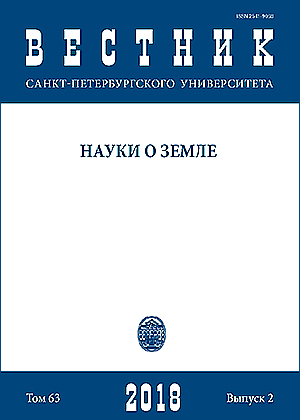The ecological framework of Russian major cities: spatial structure, territorial planning and main problems of development
DOI:
https://doi.org/10.21638/11701/spbu07.2018.201Abstract
The article proposes to consider the ecological framework of cities as a set of undeveloped and unsealed green areas providing ecosystem services, so-called green infrastructure. General features of the ecological framework of the 15 largest cities of Russia are analyzed on the base of statistical and remote sensing data, the main problems of its territorial planning are identified, and possible mechanisms for their solution are proposed. The basic indicators of the structure evaluation of the framework are proposed and calculated, the protection status of its elements is estimated, on the basis of which the cities with unfavorable conditions for its preservation are identified. It is defined that in the largest cities the share of a tree cover from the city square fluctuates from 16 (Volgograd) to 61 % (Perm), and in three cities from 15 (Omsk, Yekaterinburg, Krasnoyarsk) less than 1 % of the area of a tree cover is protected. The mapping models of the framework for each of the cities are presented and three typical configurations are identified. The obtained results are compared with various domestic and international regulatory indicators of greening, which leads to the conclusion about the individual features of the structure of the ecological framework of each city.
Keywords:
ecological framework, major city, green infrastructure, tree cover, protected area, urban planning, green space
Downloads
References
References
Downloads
Published
How to Cite
Issue
Section
License
Articles of "Vestnik of Saint Petersburg University. Earth Sciences" are open access distributed under the terms of the License Agreement with Saint Petersburg State University, which permits to the authors unrestricted distribution and self-archiving free of charge.






